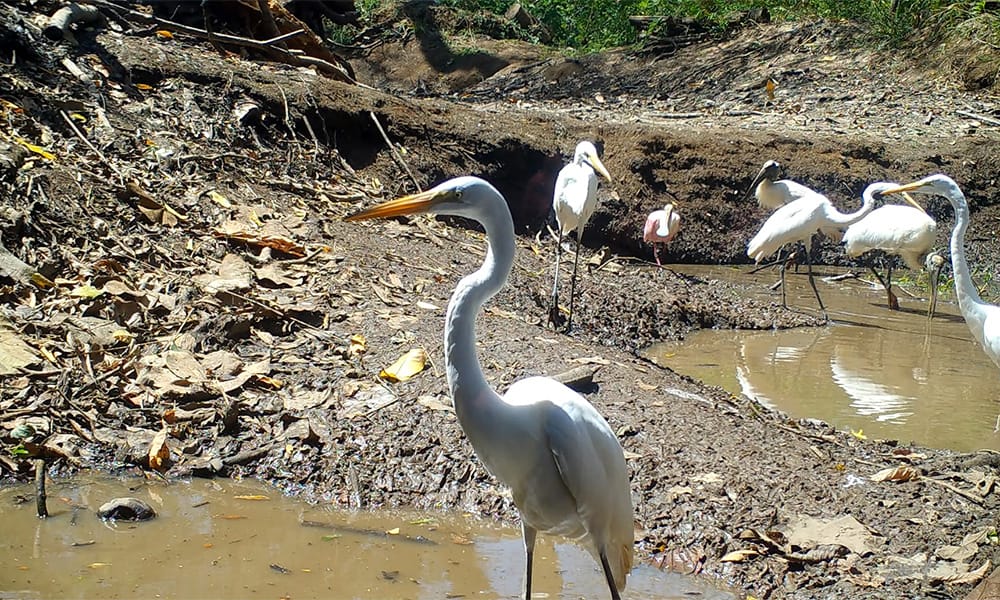Elegant is an adjective that means pleasingly graceful and attractive in appearance and manner. This is the perfect description for the focus of today’s article, the great egret.
The great egret (Ardea alba) is known as the garceta grande or garza real in Spanish. Both names jive with the appearance of the bird. The first one points out that it’s tall. The second one contends that it’s so elegant that it should be placed among avian royalty.
I find great egrets attractive in both appearance and manner. As for appearance, they’re extremely tall, measuring about a meter in height with much of that height resulting from their long, thin neck. They have long black legs and a spear-like yellow beak.
Other than those bits of color, they’re a uniform pristine white. Their fanciness gets kicked into high gear during breeding season when they’re adorned with long ornamental plumes which were once prized for ladies’ hats.
The manner in which they fly and hunt is also pleasing to behold. In flight, they curve their long necks into an ‘s’ shape and leisurely glide by with infrequent beats of their wings. Your eye is immediately drawn to such a large creature in the sky. Their hunting activity is perfectly suited to be captured by camera traps.
They wade into the water’s edge, slowly framing themselves perfectly in front of a well-placed camera, spot a prey item, and ever so slowly prepare themselves for a sudden, forceful stab with their sharp beaks.
I think I like it because it’s the same quick strike method I used while catching baby turtles with a long-poled net in lakes growing up in New Jersey. You spot the item you’re hunting, get as close as you dare without scaring your prey, and then, boom!, you strike.
Great egrets are both common in Costa Rica and the world in general. In Costa Rica, they can be found in just about any open wetland habitat throughout the country. Some birds are permanent residents, but the population is greatly increased from October to April by migrants from other areas. Worldwide, great egrets can be found in parts of North America, South America, Africa, Europe, and Asia. There are four recognized subspecies but they’re all great egrets and there is minimal variation.
Great egrets use their precise jabs and sharp beaks to hunt a wide variety of mostly aquatic prey. They’ll eat fish, frogs, crustaceans, small reptiles, large insects, and the occasional small mammal. Smaller items get seized with a pinch of the beak and swallowed down, but larger prey are literally speared and then eaten after they’ve given up the fight.
I see great egrets frequently in the field and record them regularly in camera trap projects that include wetlands. Normally, I spot single individuals eyeballing some patch of water for a potential meal.
Sometimes as the dry season starts to shrink water sources into small puddles in Guanacaste, I’ll be treated to a honking conglomeration of water birds, including a large number of great egrets, all fighting for the opportunity to grab water creatures that no longer have anywhere to hide. I recorded such a puddle party the other day at Finca Las Garzas and I’ll include a few of those clips in the video below.
About the Author
Vincent Losasso, founder of Guanacaste Wildlife Monitoring, is a biologist who works with camera traps throughout Costa Rica. Learn more about his projects on facebook or instagram. You can also email him at: vincent@guanacastewildlifemonitoring.com






